One moment you’re out happily cruising, the next your RPMs are limited on one engine. I guess it was only a matter of time. I throttle back and then re-apply and we’re back on, but moments later the same again.
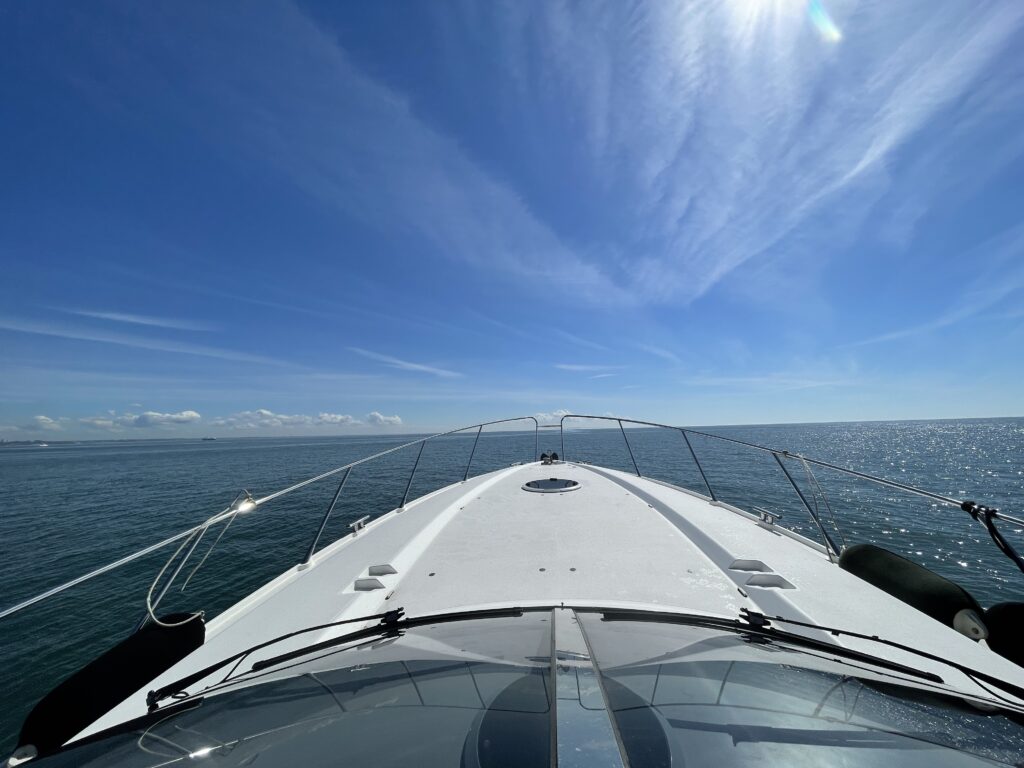
No plumes of black smoke to speak of indicating to me that it’s unlikely to be turbo or air intake related. This happens intermittently a few times over the next couple of journeys. I check the Separ primary filters, these have always been clean and never shown any sign of water. This time there is evidence of some muck at the bottom of the bowl. I always tend to give them a cursory glance and this is the first time I’ve seen anything.
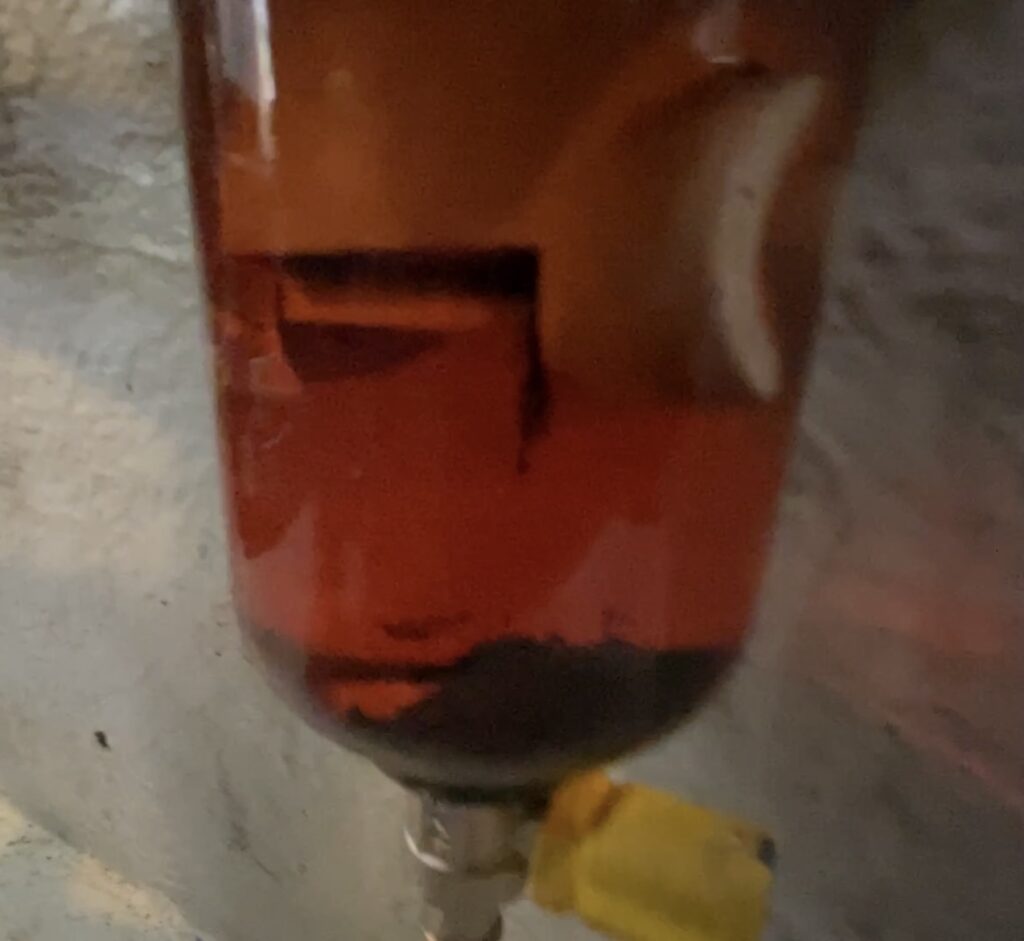
Sure enough the filters are full of diesel bug.
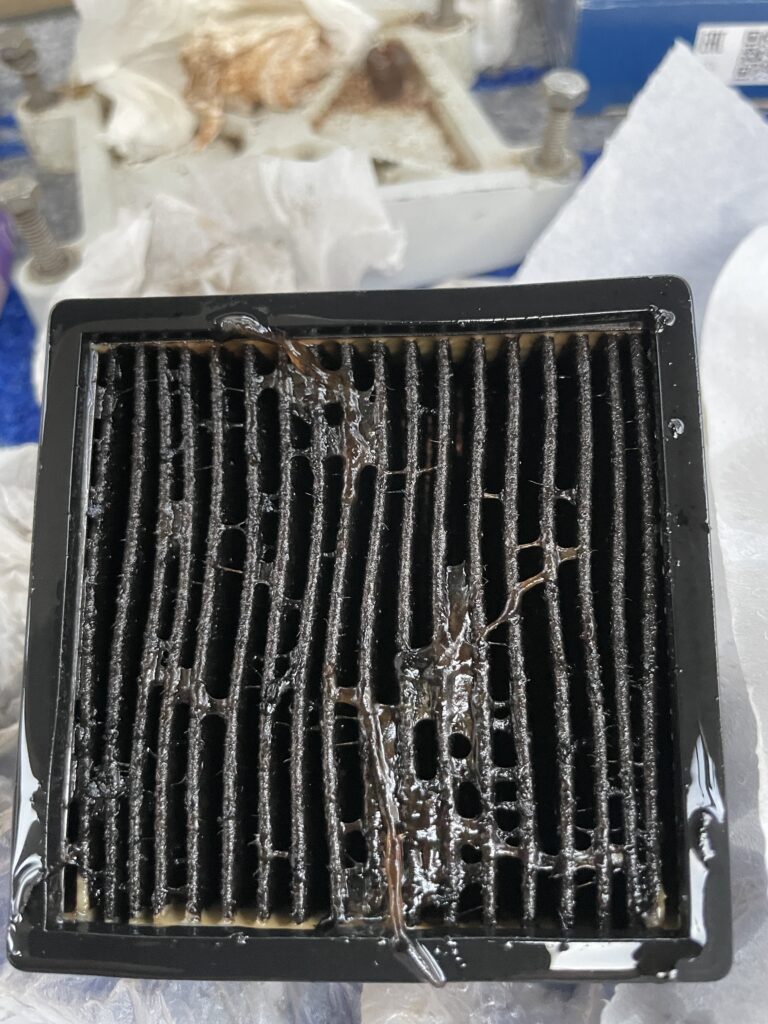
It’s disgusting stuff. The previous owner had had the tanks polished a couple of years prior. We purchased her with a full tank of fuel and used 2/3rds of that getting home. We then brimmed it and over the next three months or so had used about half a tank.
Of course this might not necessarily be the cause of our issue, there are many things it could be, duff injectors, fuel pump, governor, blocked fuel pipe, blocked fuel strainers on the tank feed dip tube, air leak in the fuel system and much more. However as with any intermittent issue, there is a process of elimination to be done. For us this begins with fuel quality. We now know we have a bug issue, it was a surprise as the fuel wasn’t old and the bowls were always historically clean in our ownership. With the new FAME biodiesel this appears to be a much more frequent issue these days, with many contaminations coming direct from the fill up stations.
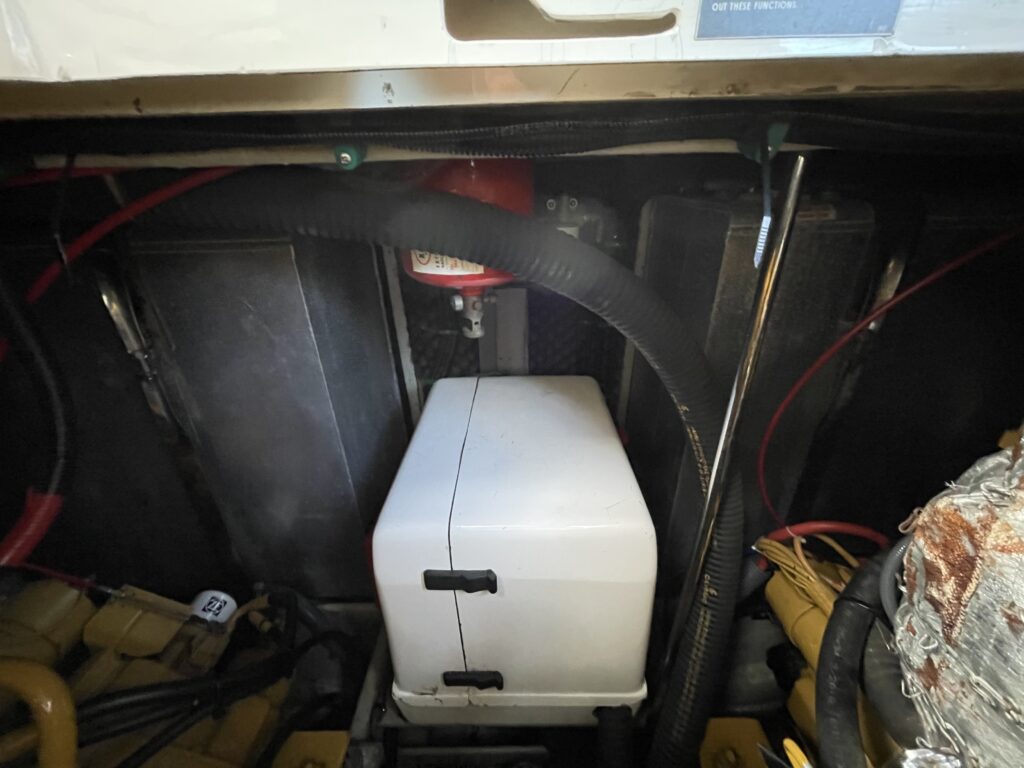
Prior to purchasing a boat I’d read up as part of the research about diesel bug issues. The design of our tanks is such that they cannot be removed without removing the engines nor can they be cleaned in situ. They also do not have a sump or drain tap. Our setup holds 990L overall in 2 equal sized tanks with a deck filler each side. The tanks are connected at the base with a large balance line. All the fuel feeds and returns come off the starboard tank and the port tank is the slave as it were.
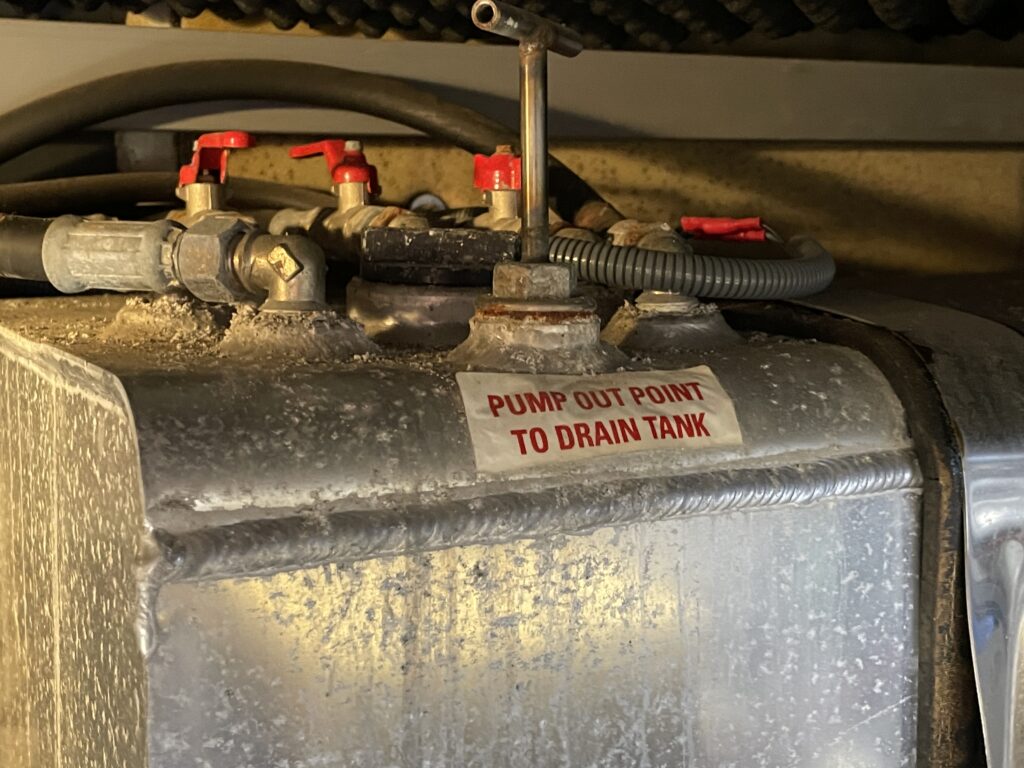
I recalled seeing a product in passing that looked impressive called the Diesel Dipper. I decide to follow this up now with a call to the manufacturers…enter Peter from Marship.
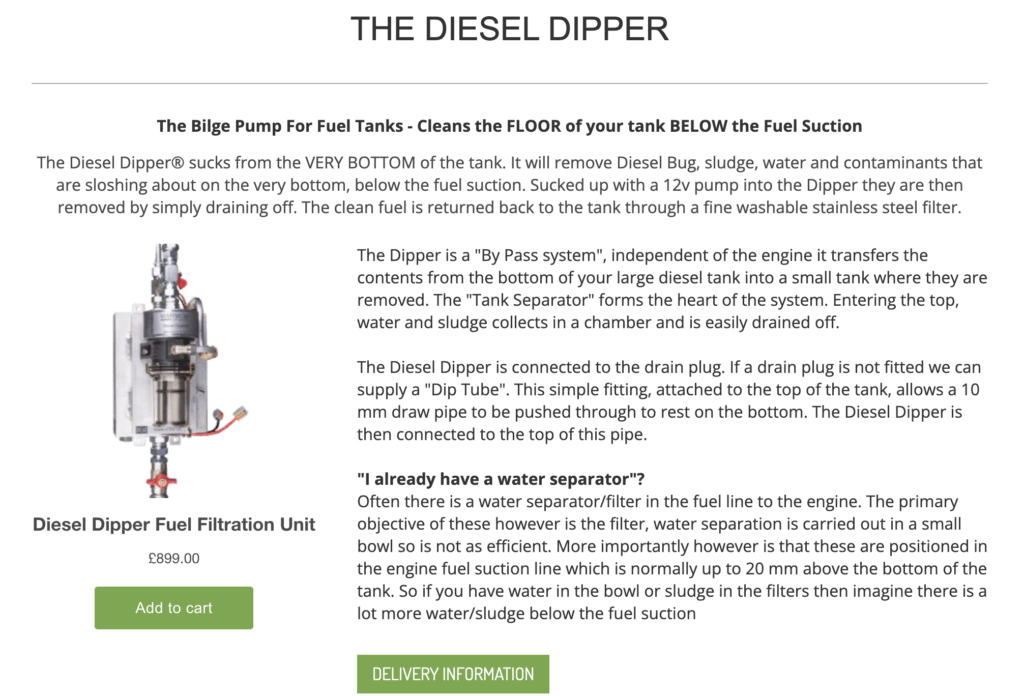
The poor chap patiently answers a barrage of questions over many emails and a couple of phone conversations. Long story short, for diesel bug to exist there must be water in the tank, this could be drawn in through the breathers with the hygroscopic nature of FAME Biodiesel, it could be in the fuel at delivery point, or entering through the deck fillers. Either way, eliminate the water, and you eliminate the bug. So a plan was set in motion to install a diesel dipper and dose up the tank with Marine 16 Diesel Bug Treatment and some Diesel Injector Cleaner for good measure. The dipper arrives as below.
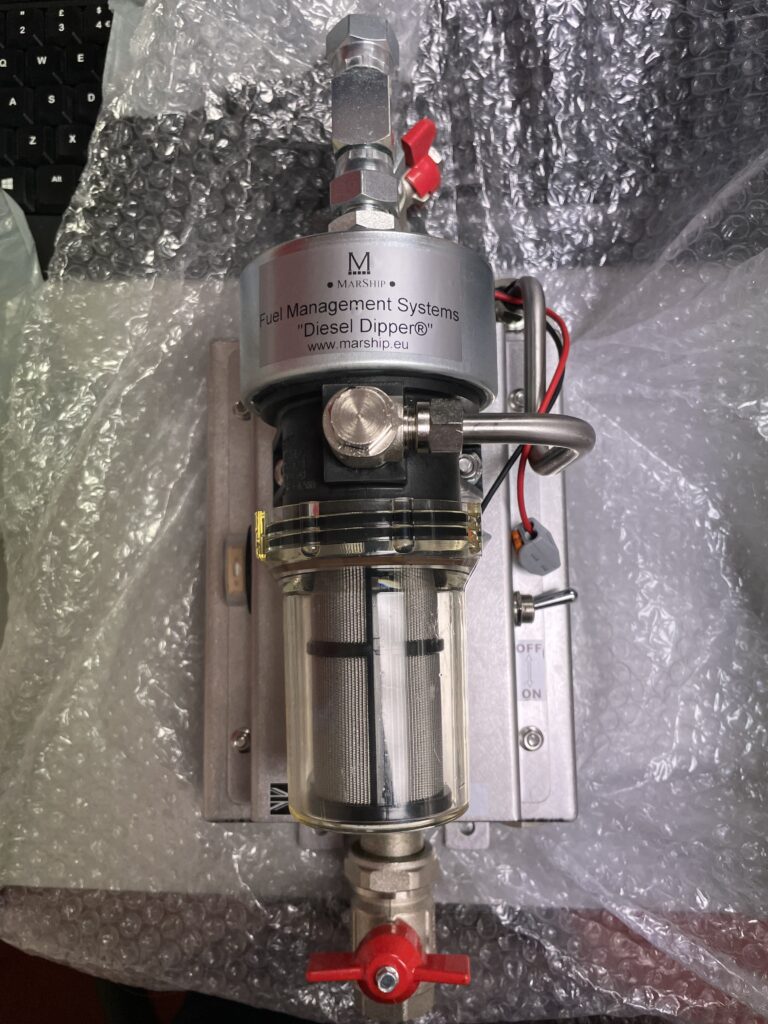
Essentially, installation of the Dipper merely involves connecting up a feed line, a return line, a power feed and an earth, and then four bolts to secure it! Easy in principle. A little trickier when you consider what you have to work with. The engine bay on our boat doesn’t have much in the way of space! I don’t want to drill a hole in the tank for the proprietary and optional dip tube and plumbing a return line without drilling another hole will also add extra work. As it happens, the tank is fitted with a “pump out point”, which can be used to suck diesel out. It transpires that this is its own dip tube set about 10mm off the tank floor. Apparently fuel pickups are generally around 20mm off the tank floor. I didn’t appreciate that the tank already had a dip tube, unfortunatelty it didn’t go all the way to the floor of the tank which Peter recommended for the dipper to work properly. Fortunately, the pipe had an internal diameter of around 10mm, which was enough to get a 10mm dip tube down it…after removing some weld that was in the way with a rat tail file. I order the dipper and various fittings.
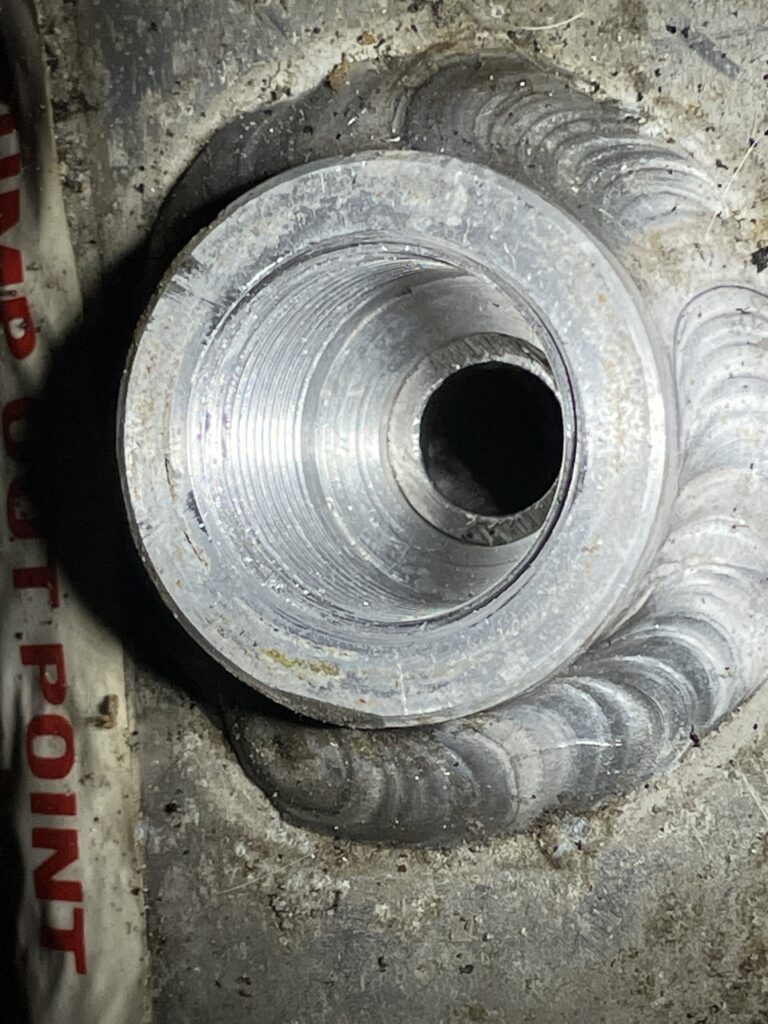
The pump out point bung with the tee handle is removed and Peter supplies me with a suitable length of 10mm OD aluminium tube with a 45 degree slash cut in the bottom. My tank has a 3/4”bspt female thread so with a reducer fitting I adapt it to suit the supplied compression fittings and shut off valve. A 3/8 hose will connect to the barb through which the dipper will draw its diesel.
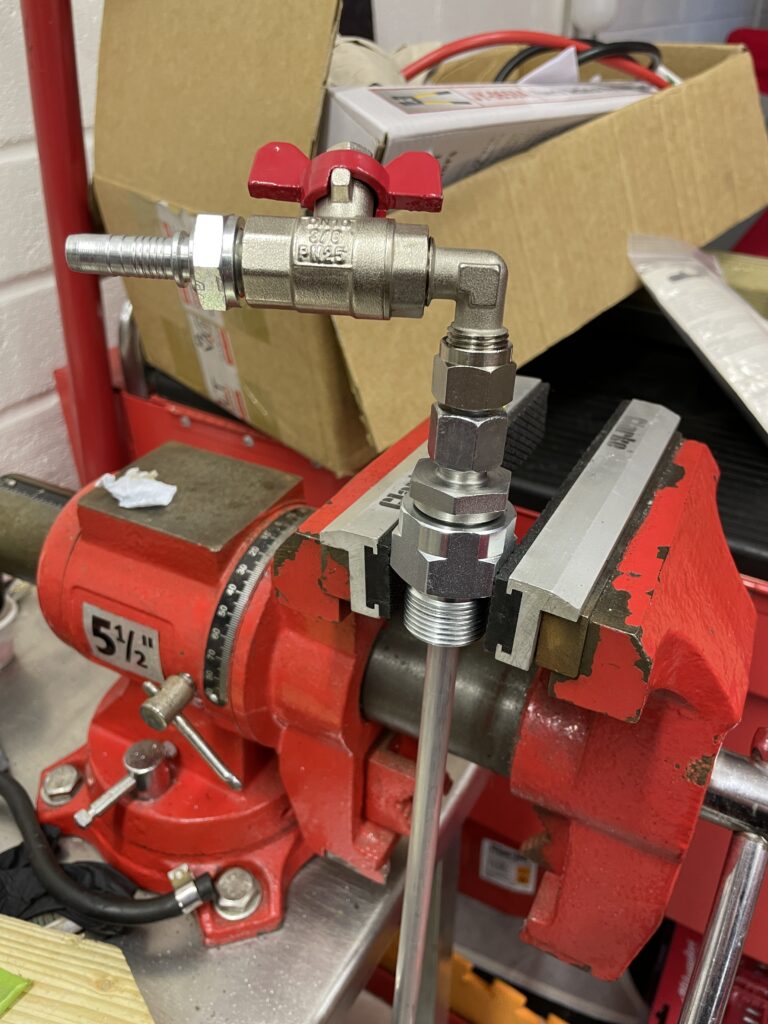
Installed in situ below. For really bad cases of contamination Peter recommends moving the dip tube 20mm off the tank base and gradually lowering it. I’ve set it to the base, if it’s too badly contaminated I’ll raise it up as necessary but I’m being positive for the moment!!
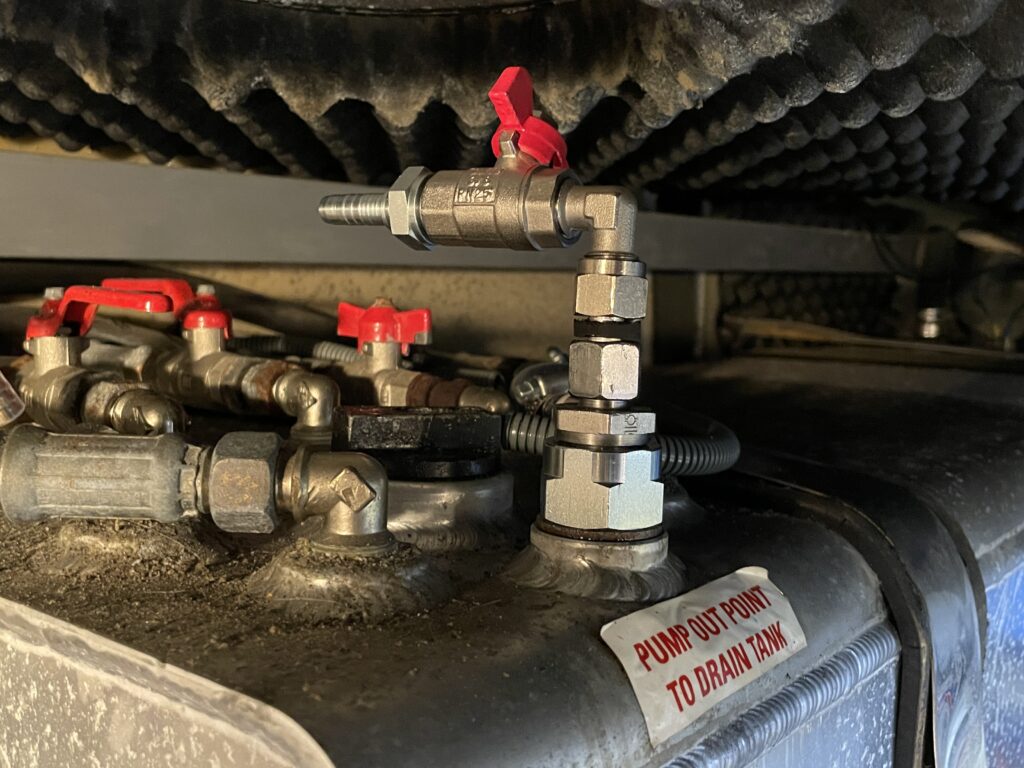
Unfortunately, I’d already dosed the tank up with a product called Fuelset that came with the boat. This is an additive that essentially absorbs water into the diesel which is counter to what we are trying to achieve with the dipper which is to remove it!! By absorbing it into the diesel, the idea is it deprives the bug from the water it needs to thrive, but it can’t be good for the injectors, modern diesel is sulphur free which removes the lubricity anyway so the water won’t help with that(the Marine 16 Diesel Injector Cleaner does provide lubricity to them) and it is possible for the Diesel to become saturated with water. While I’m experimenting with my dipper tube fittings above, I hoover some swarf up and accidentally suck a load of diesel up the dip tube. I immediately turn the hoover off, and the contents are still in the tube, pouring this into a bottle you can see this saturated fuel. On the left is diesel straight from the Separ primary on the right from 10mm off the bottom of the tank!! I won’t be using or recommending the water absorbing additive going forwards and will stick to the Marine 16 stuff.

The idea behind the dipper is that it doesn’t just remove water, it is also supposed to remove sludge, the dead bug that the Marine 16 biocide will hopefully kill as well as any gunk that has built up over the years that may be lining the walls and floor of the tank. The filters on both engines were quite clogged, the engine that was cutting out seemed ironically better filter wise than the one which was behaving. This leads me to believe that my problem is with the end of the fuel pickup tube which should have some sort of strainer on the end, this is possibly being starved of fuel as diesel bug wraps around it. Perhaps this tube is at a slightly different height to the other. I’ve also noticed that the problem rears its head after a manoeuvre to port, which possibly causes sloshing in the tank and debris to affect these feed pipe. That’s the theory anyway. The dipper is more effective at sea because it relies on the sloshing about to dislodge and mobilise the accumulated sludge.
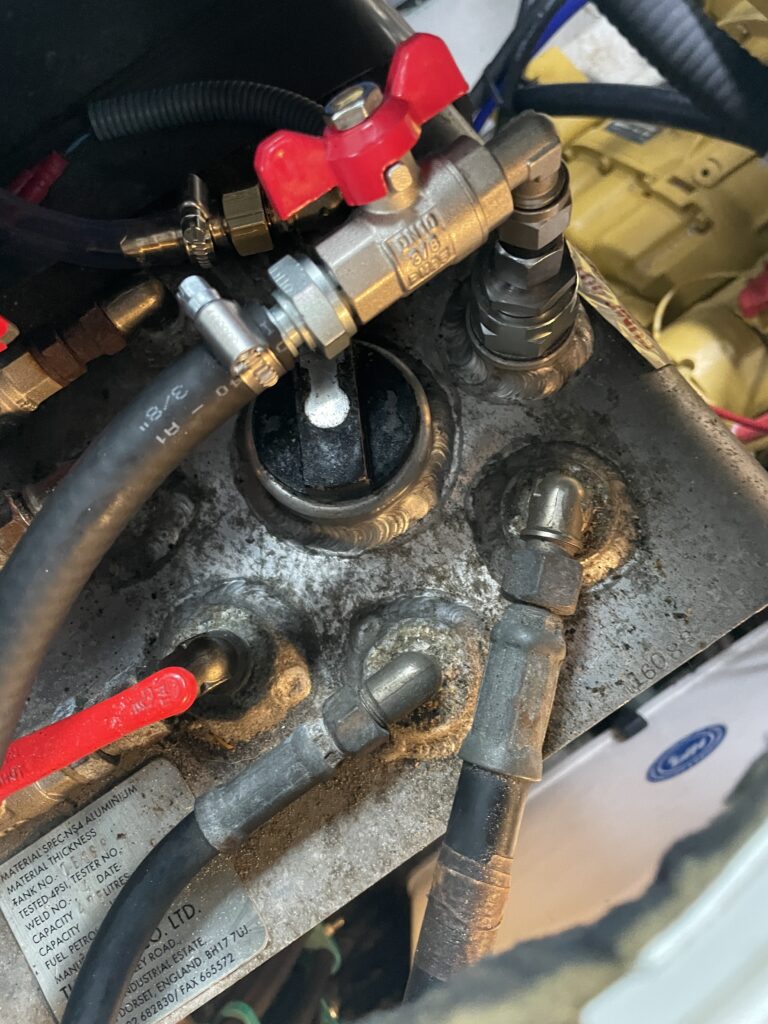
After resolving how to get the diesel into the dipper, I now need to look at return line options. All the returns above on the tank top are used, I could tee it into the seldom used generator return line but again I’m reluctant to disturb any of the original fittings. Instead I decide I’m going to tee the return into the 51mm fuel filler hose. I can’t find a suitable fitting for this, so I commission one from a fabricator on ebay who has similar products listed after an exchange of messages. It’s made from aluminium, 51mm with a 3/8 barb.
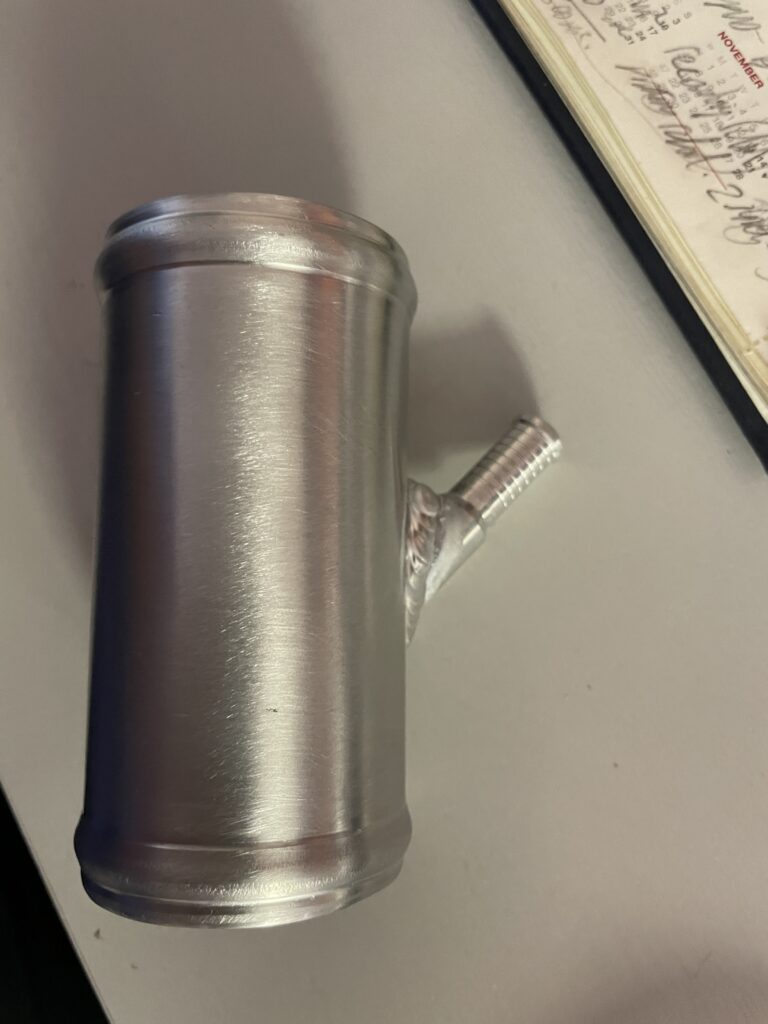
The plan is to introduce this on the return line of the slave tank because it is more effective to have the return as far away from the feed as possible. Of course, both tank filler hoses are a pig to get to. It’s not an easy job to cut these reinforced hoses, especially in situ, so I buy some new Vetus fuel filler hose to replace these original hoses.
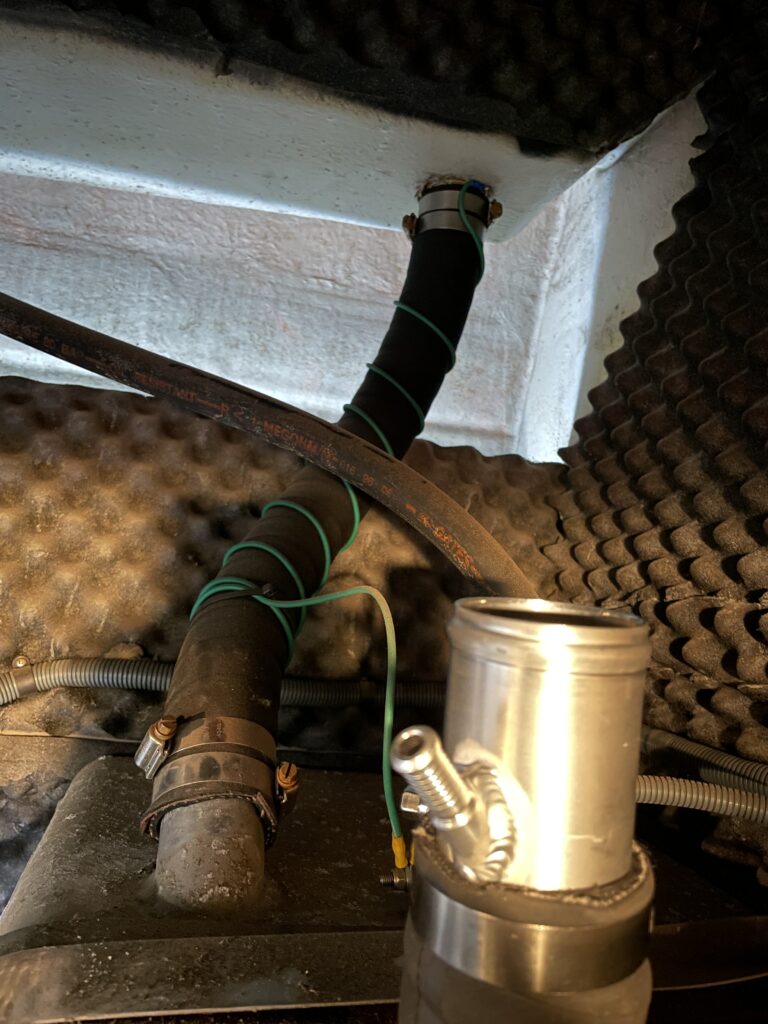
This is the pipe that will need to be replaced. The photo above is taken on zoom with arm at full stretch. There is no way I can get to the top of that hose! I put this out of my mind to deal with later. I have a temporary line rigged up to the generator return as a plan B until I can get to this return. More pressing is where to mount the dipper, there isn‘t much space, I don’t want to relocate anything original, I’m trying to avoid drilling or fixing into the bulkhead and it should be mounted somewhere accessible and close to the pickup that doesn’t interfere with anything.
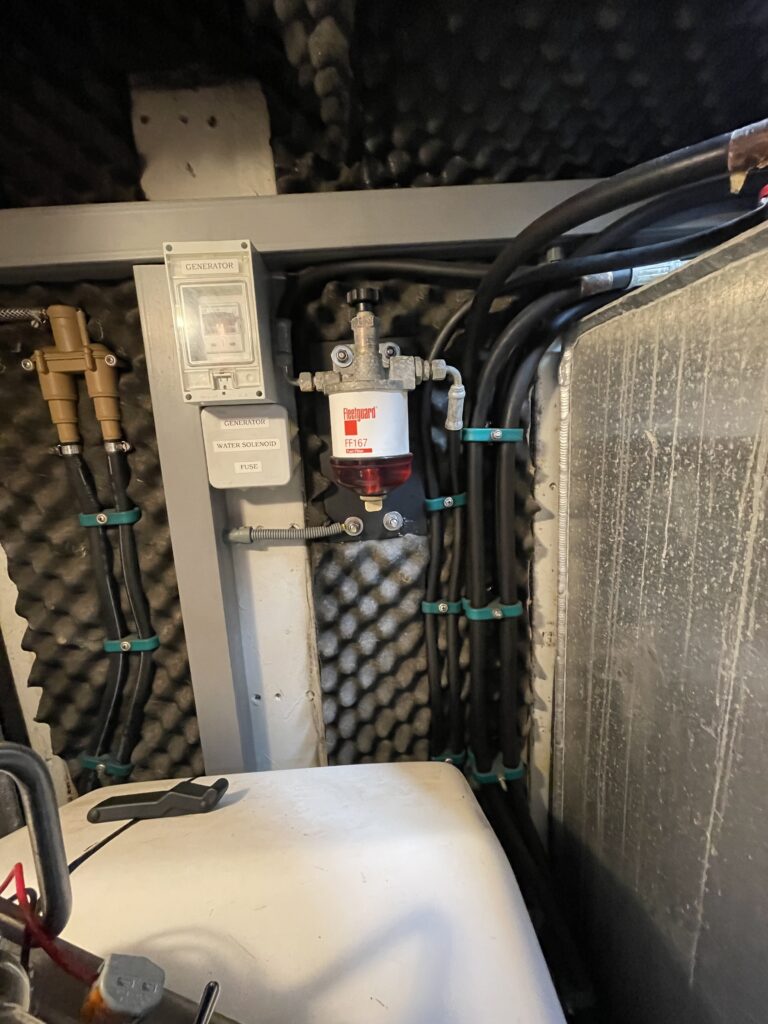
In between the two fuel tanks is the generator, above it on the bulkhead is an antisiphon to the left, and the generator primary fuel filter to the right. There are vertical timber ribs along the bulkhead which are thicker than the recessed bulkead to which trunking and the generator electrics are fixed to. I contemplated moving the filter because it already has fixings in place and is in an ideal position. After much head scratching, I come up with a solution involving custom brackets. I take some measurements and send it off to the fabricators. Once they are back I offer them up and drill the relevant holes and order proper fixings.
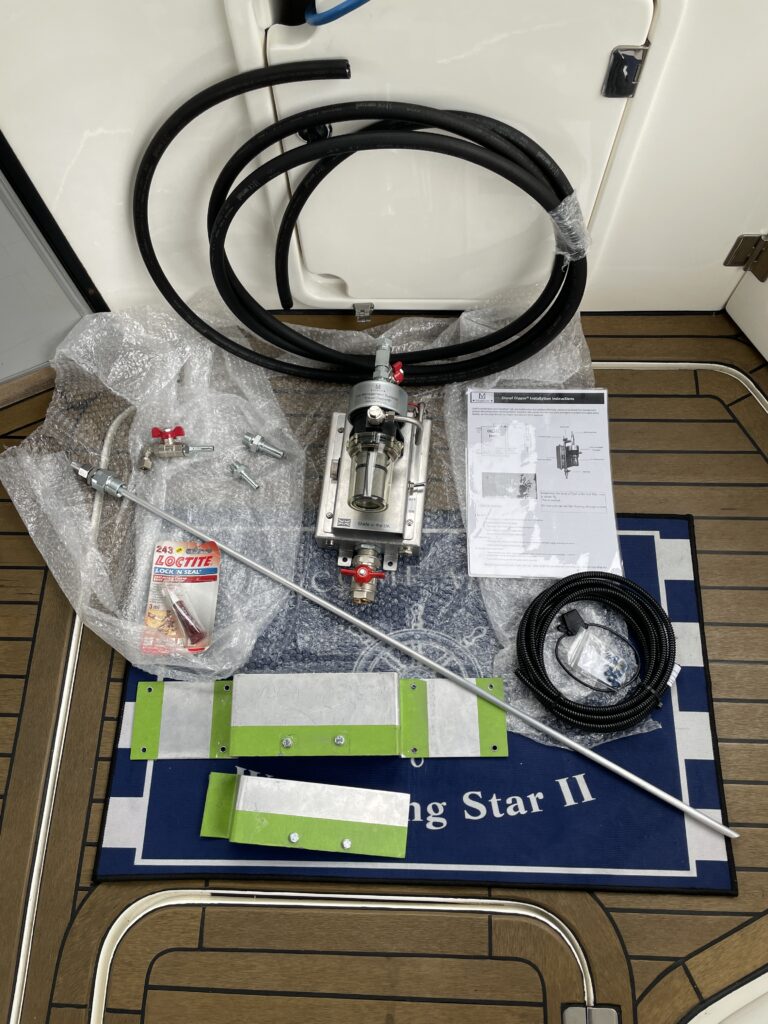
In the interim I look at the electrics. There is trunking in place, and the nearest power feed and fortunately the most convenient is the generator starter motor. The generator has its own isolator switch and its own battery. I prefer to have the dipper running independently from the engines and also to not be draining the starter battery bank on the main engines or have it running off the house battery. I order the proper cable sheaths and marine grade wiring and fuse. The dipper has its own fuse but I fit an additional one next to the positive take off so its properly protected. I then run the cabling up the existing conduit.
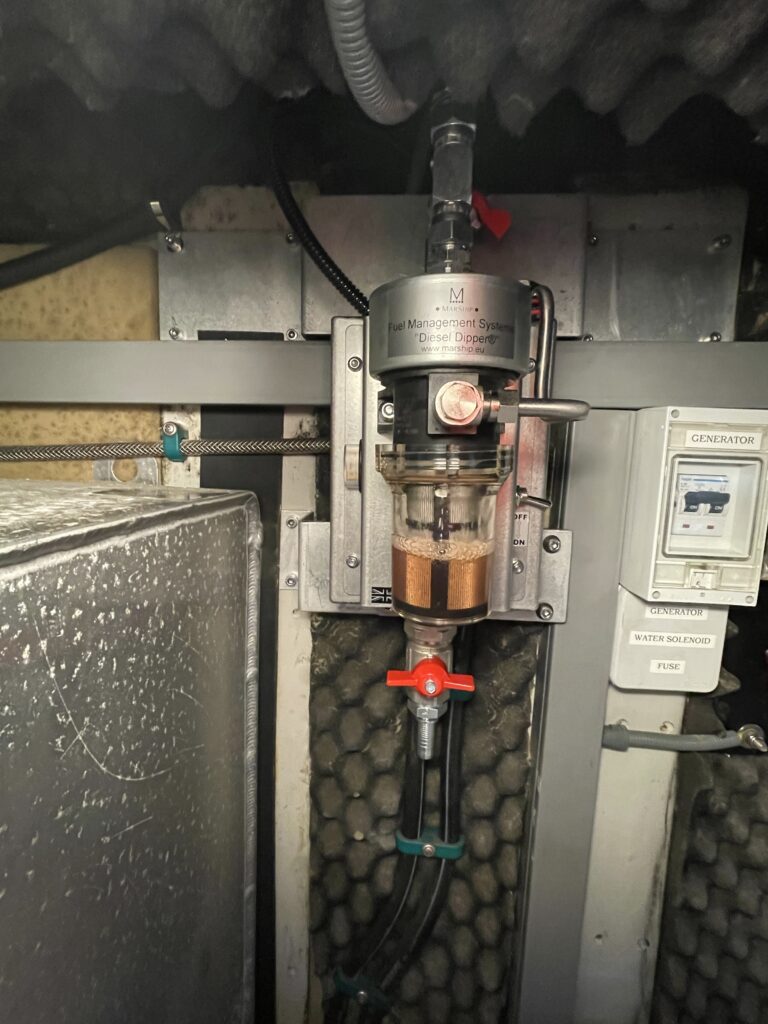
The brackets allow the dipper to be spaced over the anti siphon for the generator. It’s not a an item that needs to be serviced and the brackets themselves are secured to the more substantial vertical ribs on 12nr fixings. The fixings are 30mm long M6 stainless steel machine screws which are perfect for being tapped into the hard wood. They tighten up very reassuringly and are further secured with very expensive Nordlock washers to stop them loosening. The dipper is then secured to the brackets and the whole assembly is very sturdily installed.
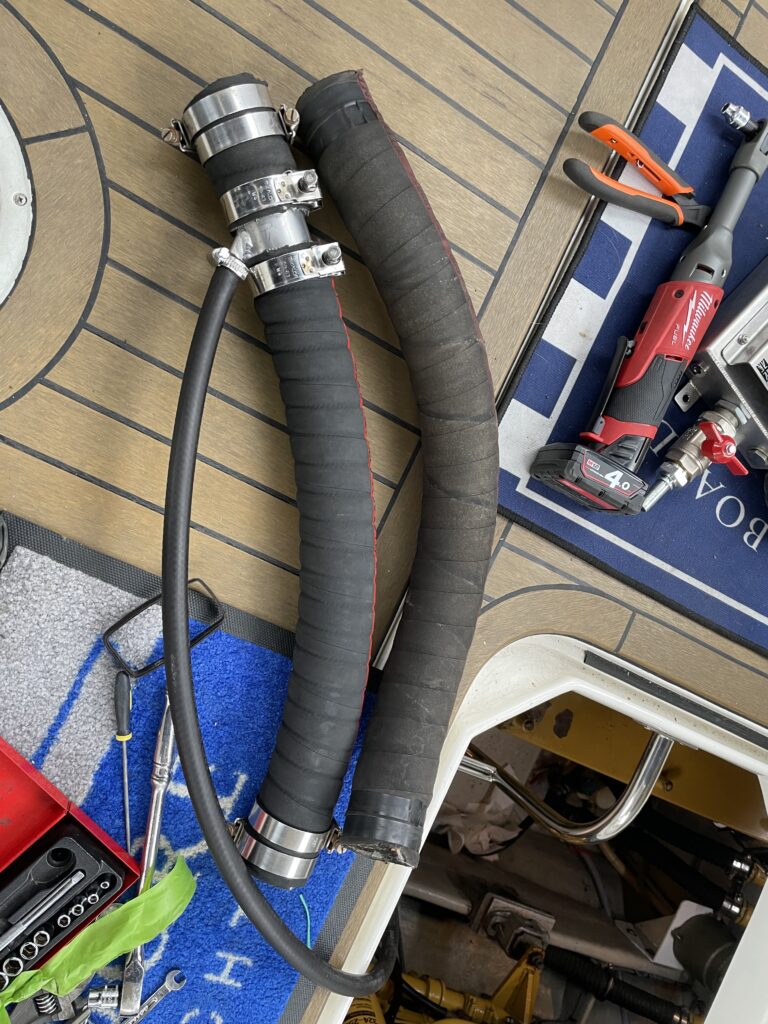
Back to the return line, we decide to replace the fuel hose. I enlist my youngest who did a sterling job. Dad was on hand to help him passing tools back and forth and he did me very proud. We managed to remove the old one, which had 1996 stamped on it, and use this to measure the new introducing the T piece into it.
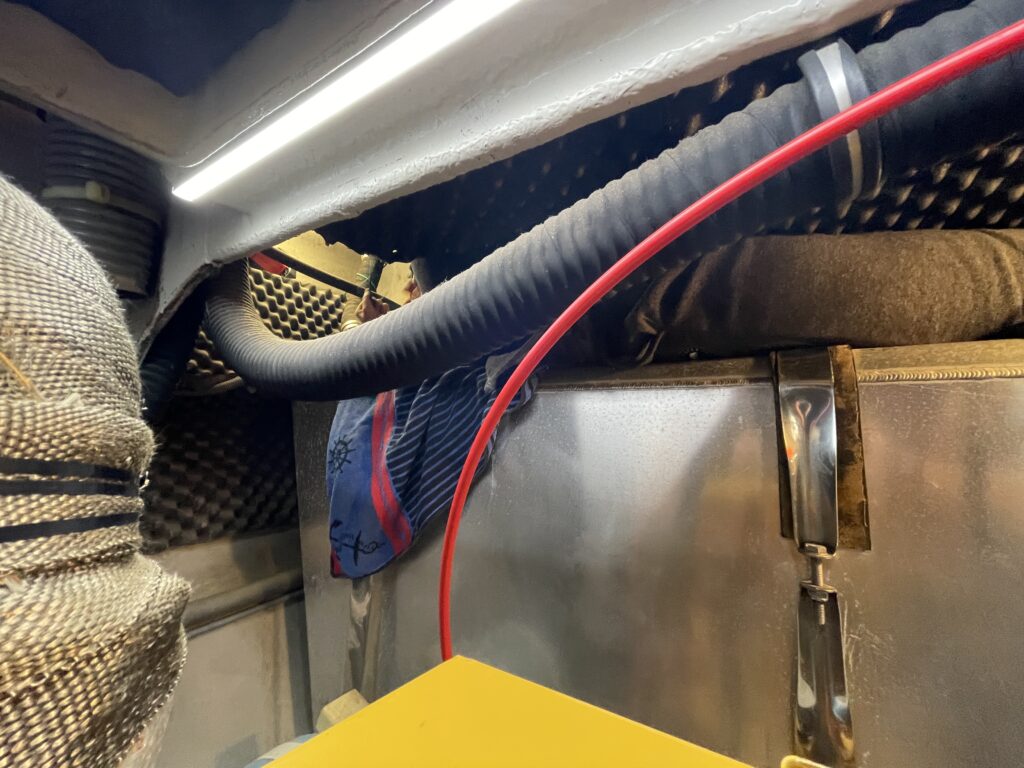
On top of the fuel tank is a well camouflaged child! Fortunately he’s able to just get in there but it’s tight.
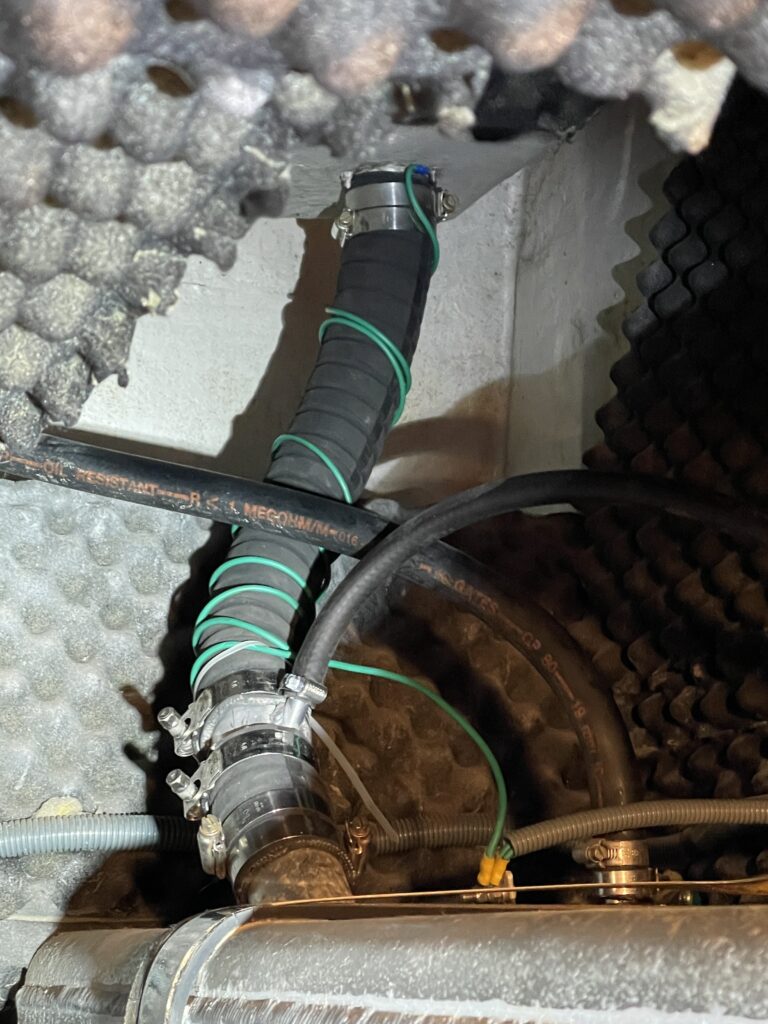
The assembly is completed. New hose fitted, (the cable tie excess did get snipped!) and we’re all up and running…
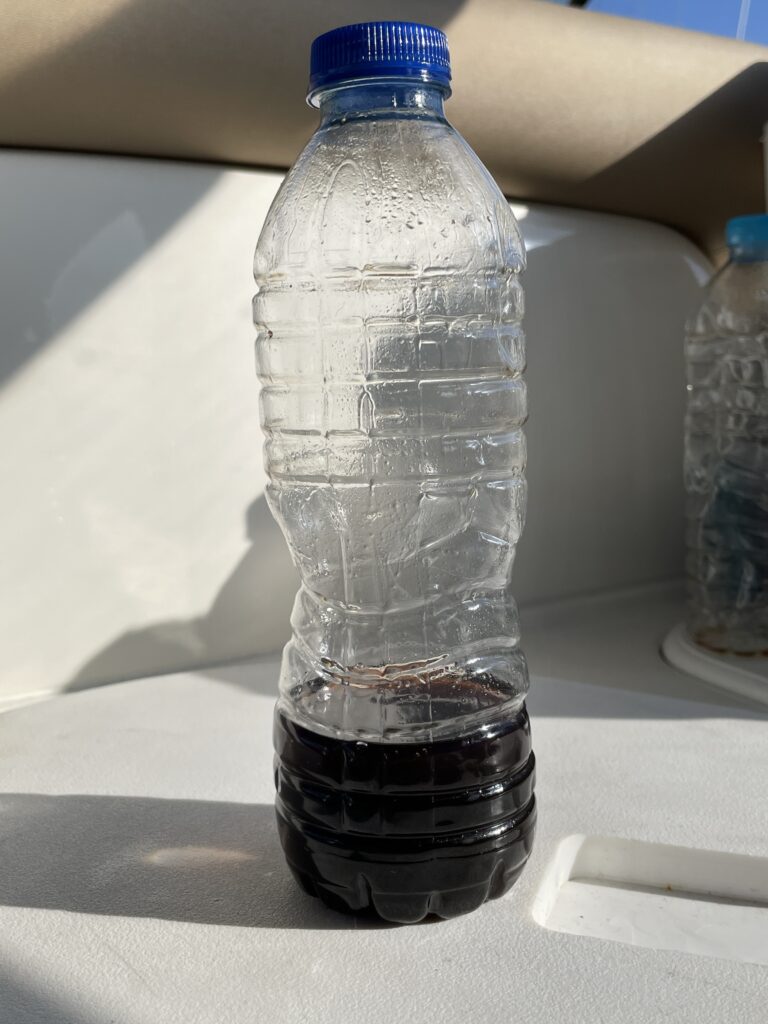
I cycle the tank for 4.5 hours in port, at 2 litres per minute flow rate, this will be sufficient to cycle the remaining 500 litres of diesel in the tank at least once. Above shows the gloop that it collected. The best way to describe it is like a thick gravy.
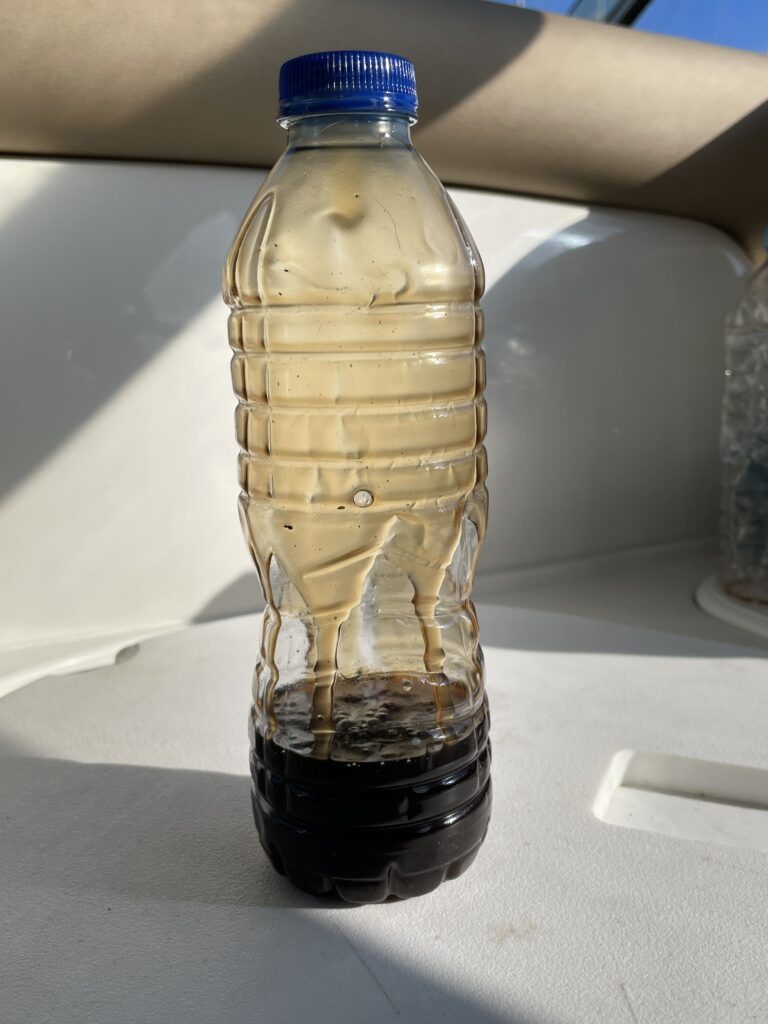
Shake it up and watch it slowly slime down the bottle. Gloopy, thick and something that will easily block filters. I presume it could limit flow if it clings around the strainers on the end of the fuel delivery pipe. I’m hoping this is the solution to our problem. Peter tells me that it’s out at sea that it really comes into its own, the movement of diesel sloshing around the tank at sea should unsettle much more. I ran it in port for curiosity and to give it a head start. Another hour running with the engines on too to create some turbulence in the tank and the dipper is running clean for the moment. I look forward to seeing what will happen at sea…this to be updated as it happens. For now, I’d say this is a good start for the dipper, whether it cures the issue or not remains to be seen but with the ongoing issues with diesel these days it will certainly future proof the quality of fuel for many years to come.
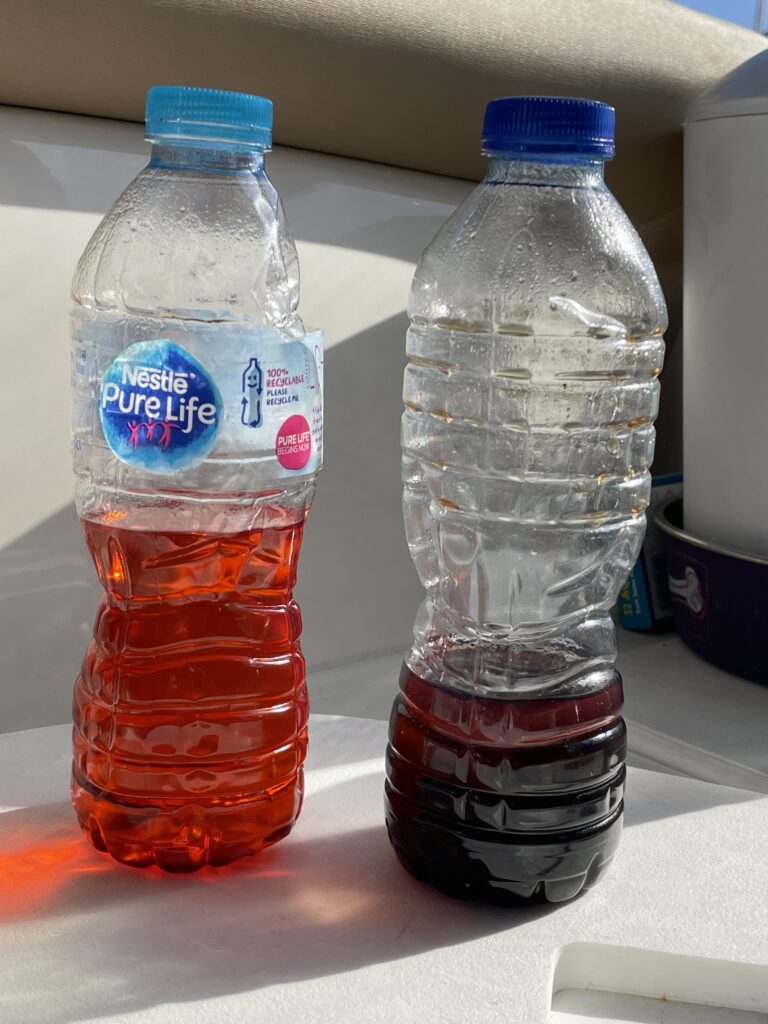
Edit: After our first journey to Sea with the dipper installed and running, it’s a force 3 and we head out for an hour or so. On return, I drain off the dipper. The bottle on the left in the pic below is what the dipper had pulled out in port after cycling the entire contents of the tank more than once whereupon the dipper was running completely clear. The bottle to the right is the additional that the dipper pulled out after an hour at sea. The movement in the tank allowing the gunk trapped by the baffles and edges of the tank to be sucked up.
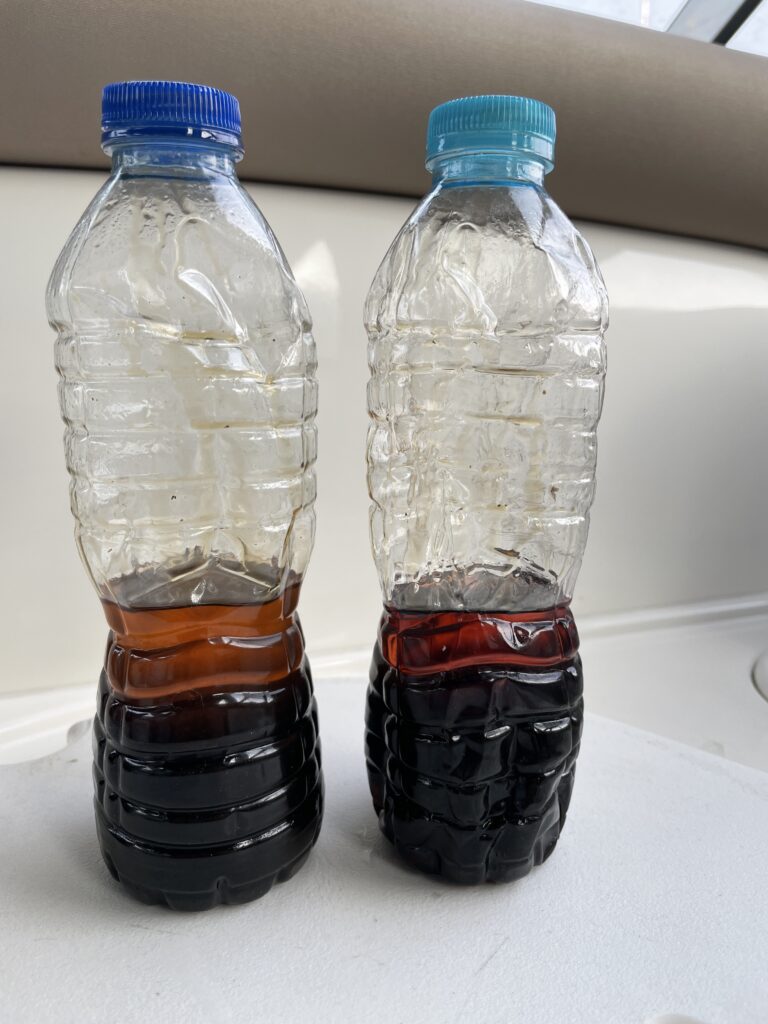
The picture below shows the total contamination that the dipper has pulled out in the left hand bottle. The right bottle is it once again running clean. I expect for the next few journeys to see a similar story as the harder to get to deposits are sucked from the bottom of the tank as it all gets stirred up.
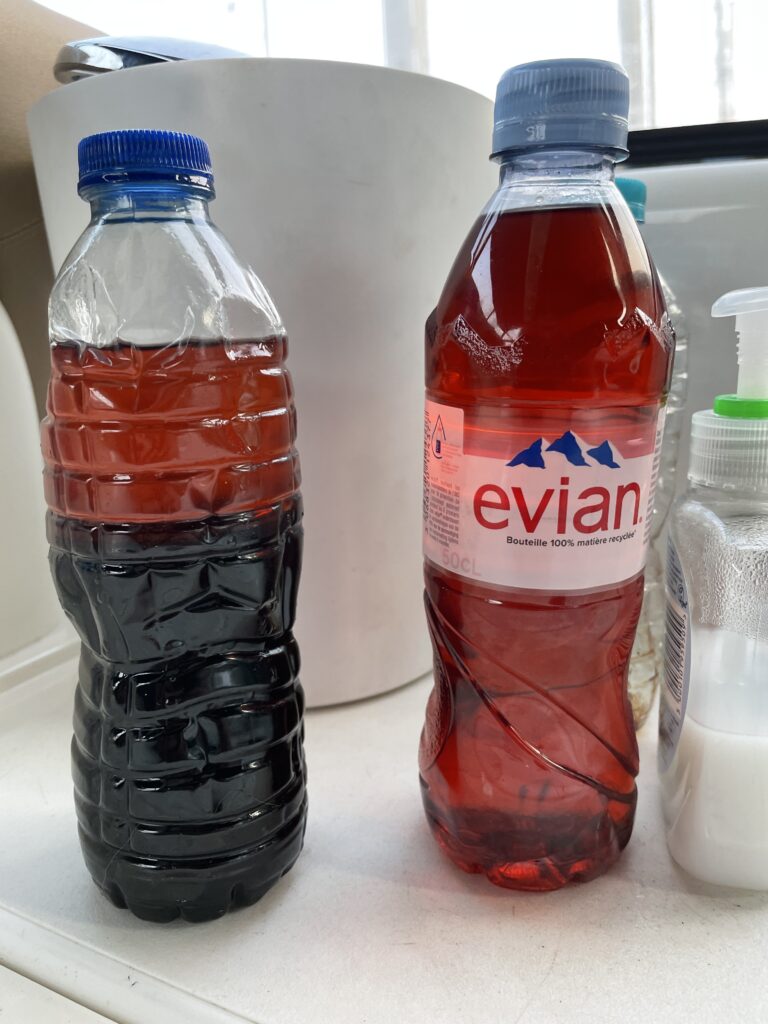
In the meantime, I notice that when the revs refuse to go above 1600rpm on the stbd engine, if I open the throttle wide open, I get what I would call whisps of black smoke, albeit very light in nature and not so easy to spot. I have also noticed that the aftercooler on the same engine is running hot at the outlet, rather than completely cool as on the other side. This has me wondering if it’s not a fuel related issue after all, but rather an ‘overloading’ situation with the engine struggling to get over the hump. I have since noticed that with a little assistance from the other engine, it gets over the hump and runs at normal revs and power is restored. This could mean a restriction in the aftercooler waterway causing the elevated temps, which in turn might be harming the performance as a result of hot air being delivered to the engine, or perhaps some sort of prop fouling (maybe a loose net) causing the engine to be under more load than normal, resulting in higher boost/egt’s causing the increase in temps. The aftercooler will be getting some attention next and the boat is due to be hauled out for its annual anti foul soon too.
In the meantime, the engines have sounded much smoother and happier on its latest outing and I feel much happier knowing that the dipper is doing it’s job admirably with regards to pulling contaminants out of the diesel. The diesel has been treated with Marine 16 Diesel Bug Treatment and M16 Diesel Injector Cleaner for good measure and I shall be adding Marine 16’s Diesel Fuel Complete following fill ups going forth.
Even if this turns out not to be our problem necessarily, or indeed in full, at least our fuel supply situation has been largely future proofed against any diesel related issues lying ahead, experiencing this problem was just the push I needed to take the Dipper off the long term to do list and onto the immediate one!
